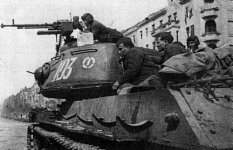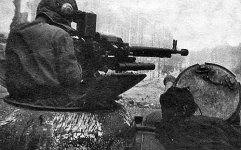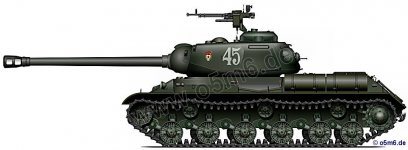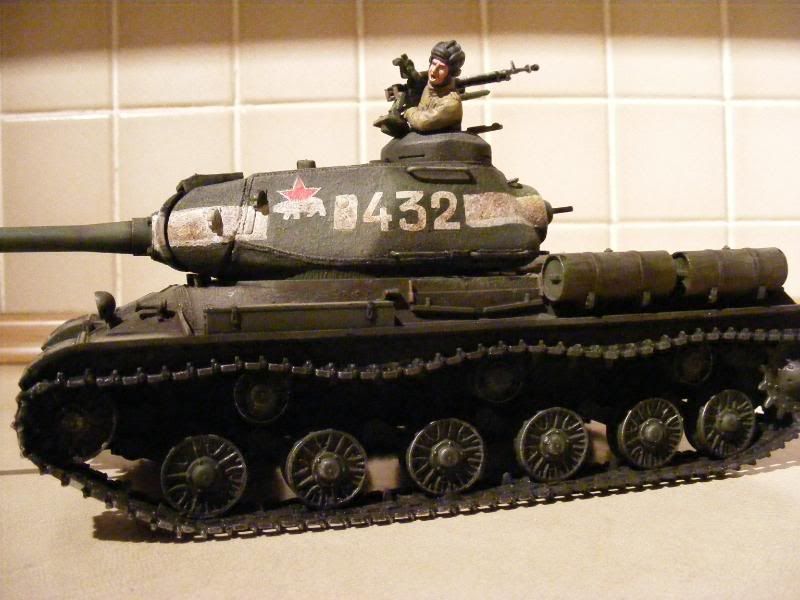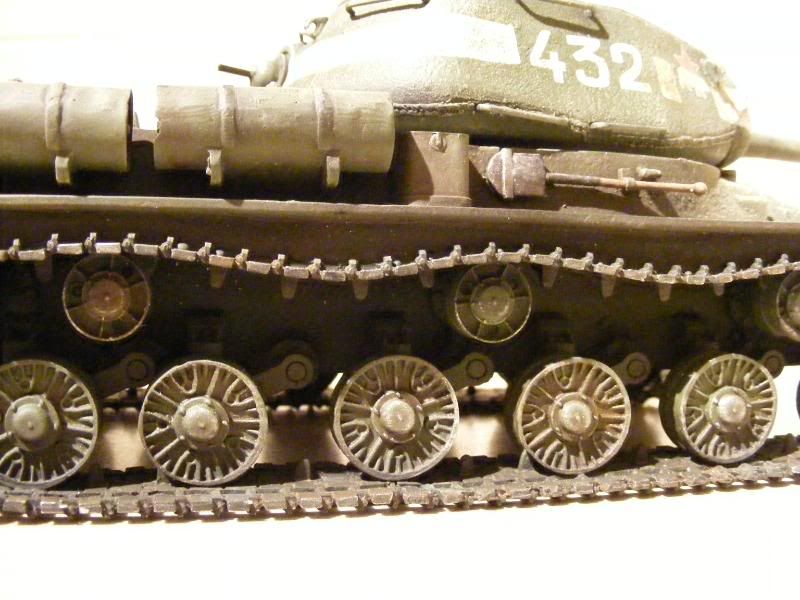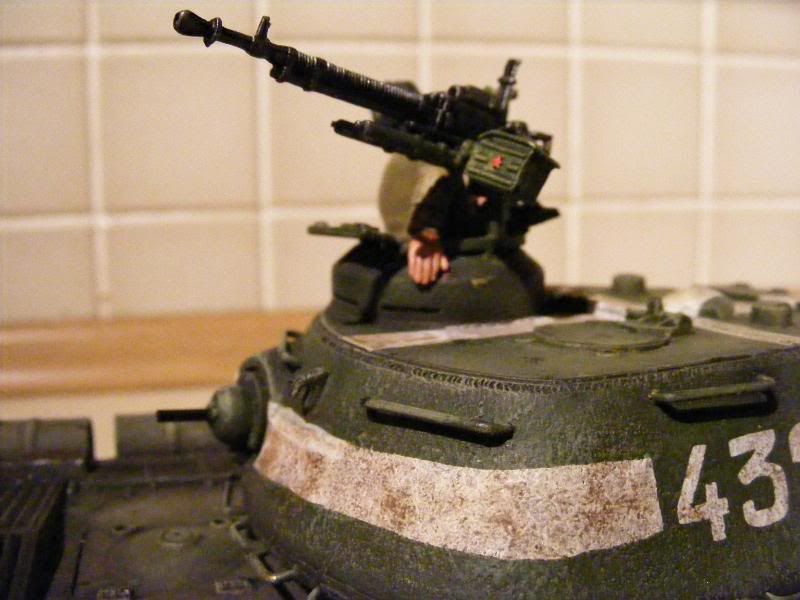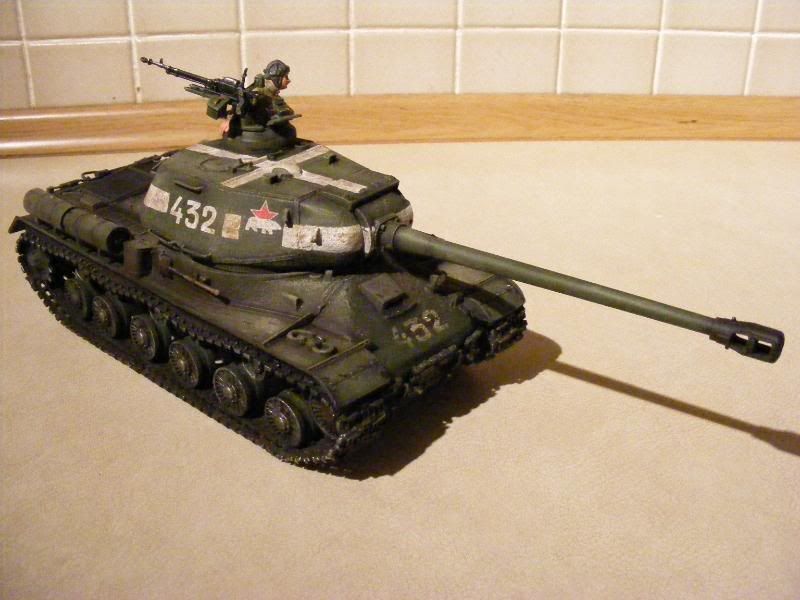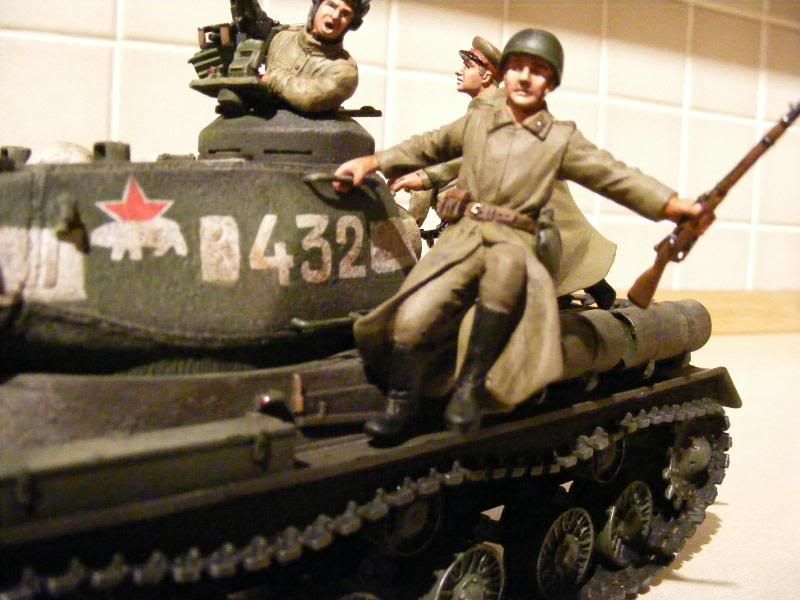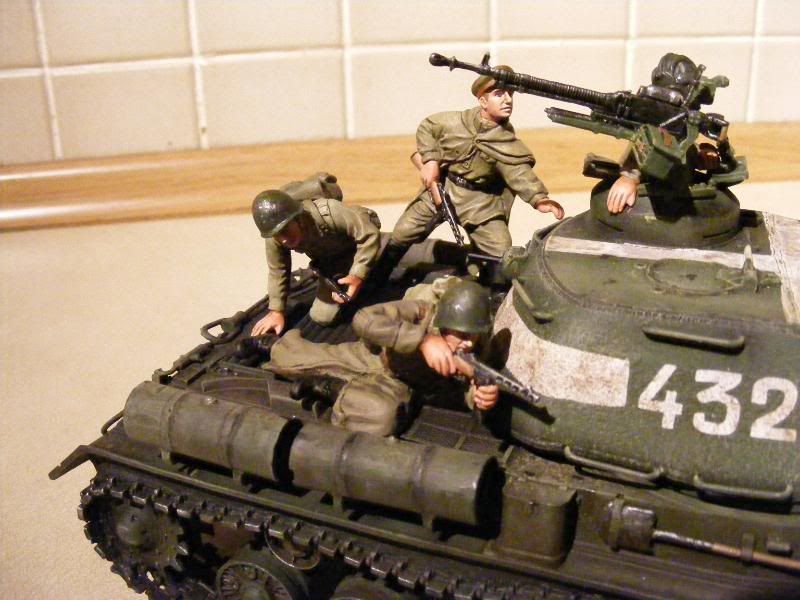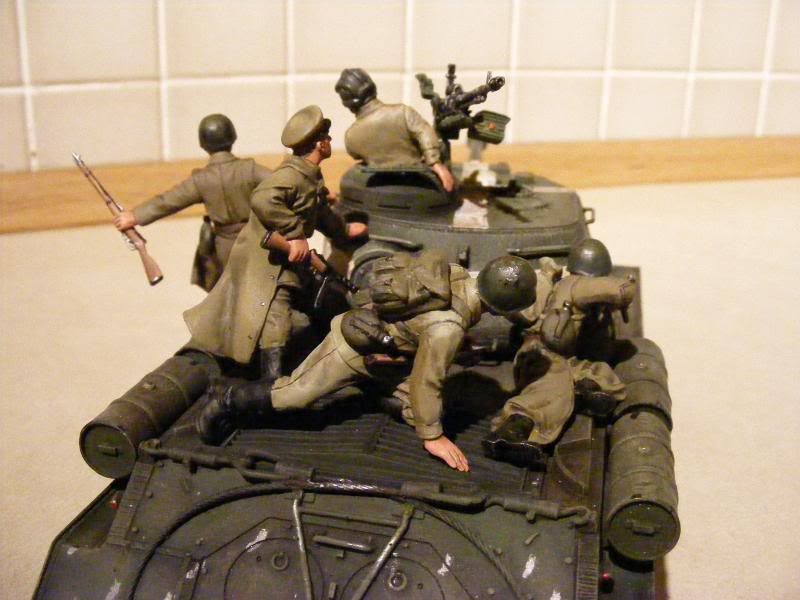Here is an excerpt from the Russian instructions on how to camoflauge a tank for winter. Unlike the German's use of whitewash, the Russians often used oil based paint.
In winter, tanks are painted all white when the aim is to avoid observation, and in two colors with large spots when the aim is to avoid identification. As a rule, all-white paint is employed in level, open country characterized by a lack of variegated color. Two-color disruptive winter paint is used where the ground presents a variety of color, where there are forests, underbrush, small settlements, thawed patches of earth, etc.
One-color camouflage paint is applied to all parts of the tank in one or two coats. For the paint, zinc white or tytanium white is used only with an oil base, and slight amounts of ultramarine coloring. For the lack of anything better, the tanks may be painted with chalk dissolved in water.
Painting in two colors with large spots can be undertaken in two ways: one is to paint only part of the tank surface, leaving about 1/4 or 1/3 of the tank's surface in the original green; another is to repaint the tank entirely in two colors, either white and dark gray, or white and gray-brown.
When the weather is cold, painting should take place in a warm place, since paint applied when the temperature is 10° below zero Fahrenheit is too hard to be applied.
In winter, as in summer, it is necessary to avoid mechanical repetition of patterns and colors. For example, in painting the tanks of a platoon, one or two tanks are painted white, a third in white irregular stripes leaving parts of the protective green paint as it is, the fourth with white and dark gray spots, and finally, the fifth with white and grayish-brown spots.
c. Covers and Ground Masks
For winter tank camouflage, one may use nets made of cord which have fastened to them irregular white patches of fabric, about 1 yard across. A large all-white cover also may be used.
When using white winter covers, it is necessary to pay attention to the degree of whiteness of the materials used, for even if a little yellow shows or if part of the material is soiled, it will sharply outline the cover and the tank against the background of pure white snow. A simple method to improve this camouflage is to place a thin layer of snow on the cover.
In winter, ground masks are also used. But the construction of these camouflage masks involves special considerations dependent on the character of the background. The principal camouflage materials employed are irregularly shaped pieces of white fabric or painted white matting. In addition to the white patches, dark patches should be fastened to the material to give the appearance of bushes, tree tops, or other natural ground features. For dark patches one may use tree branches and other similar materials. As with covers, the use of white patches alone, or of a combination of white and dark patches, will depend entirely on the terrain and the coloration of the surroundings.
To attach the patches to the mask, they are frozen on after wetting the material with water.



